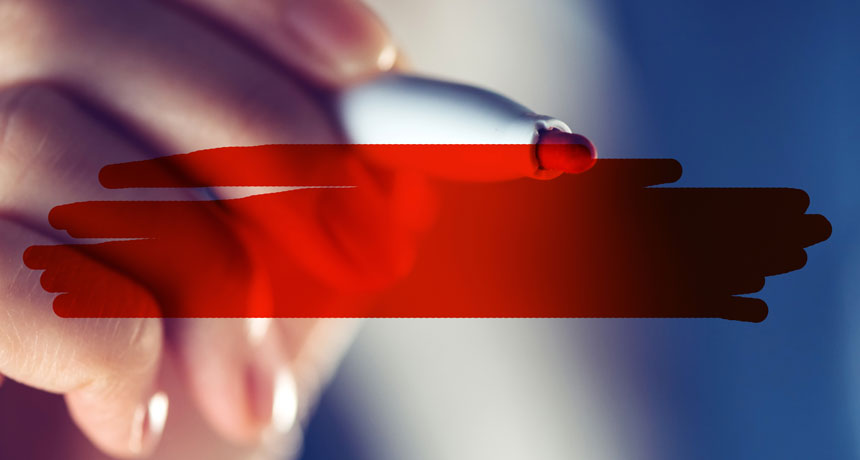You can peel permanent marker, intact, off of glass
It’s not magic: You just need water — and patience

Ink from permanent markers can seem nearly impossible to remove. However, researchers have demonstrated that the surface tension of water can peel this ink off of glass.
STEVANOVICIGOR/ISTOCKPHOTO
Permanent markers aren’t so permanent after all, scientists now report. All you need to peel the ink from glass is water. Oh, and you also need a whole lot of patience!
When glass marked with permanent ink is slowly dipped into water, the writing lifts off the glass. It then floats intact atop the water. Scientists have now uncovered the physics behind the surprising phenomenon: The water’s surface tension breaks the seal between ink and glass.
“I think it’s amazing, the fact that they can actually peel off this layer of Sharpie with just water,” says Emilie Dressaire. She is a mechanical engineer at New York University in New York City.
Researchers stumbled upon the phenomenon by accident. In the lab, labels kept peeling off glass microscope slides during experiments. “It was just a funny observation,” says Sepideh Khodaparast. She is a mechanical engineer in England at Imperial College London. She also is an author of the paper in the October 13 Physical Review Letters
The researchers first recorded how the process unfolds with thin films of ink left by permanent markers. Then they switched gears, studying another kind of film: the plastic polystyrene. A film of this can be produced more precisely than can ink films. Both ink and polystyrene films are hydrophobic, meaning they repel water. So water resists flowing over the film. Instead, it works its way between the film and the glass, which attracts water. Then, the water’s surface tension can cause it to act as a wedge, gradually releasing the film from the glass.
This technique works only if the water moves very slowly. How slowly? Just a fraction of a millimeter (4 hundredths of an inch) per second. If the water rises too fast, the wedge fails. Then water passes over the film instead of peeling it away.
“What is exciting about this work is that they have identified exactly under what circumstances you can optimize this process,” says Kari Dalnoki-Veress. He is a physicist at McMaster University in Hamilton, Canada. Now scientists can adapt the process to different types of films, he says.
Once removed, the floating film can be transferred to soft or delicate surfaces that might be difficult to write on directly. For example, the researchers transferred markings to a contact lens. The technique also could be used to clean surfaces without harsh solvents. It could even be adapted to peel films used in ultrathin electronic devices, such as solar panels, flexible screens or wearable sensors.







